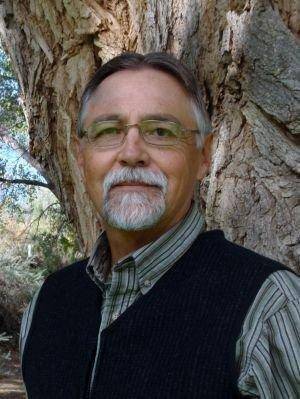В
New Grand County councilman Lynn Jackson addressed the Sagebrush Coalition at their meeting Tuesday, Jan. 8 at the Grand Center.
В
This is the second time the Sagebrush Coalition has met to discuss their opposition to a 1.4 million acre national monument that would surround the current boundaries of Canyonlands National Park in an area that has been referred to as Greater Canyonlands.
The group previously met Nov. 20, 2012, shortly after the release of a letter from the Outdoor Industry Association sent to President Barack Obama requesting the establishment of a national monument to protect landmarks the OIA states are under threat from “proposed uranium, tar sand mining and oil and gas development.”
The Sagebrush Coalition’s mission is to keep roads on public lands open for motorized access for industry and the general public.
The proposed 1.4 million acres is now managed by the Bureau of Land Management (BLM) and State of Utah School and Institutional Trust Lands Administration (SITLA).
Jackson said that the Grand County Council is now drafting a letter to be sent to President Obama and Utah’s congress delegation stating their opposition to the designation of a national monument.
One of the main concerns expressed at the meeting was that the designation could occur with a presidential proclamation and no public input.
Jackson said he was “absolutely opposed to this process.”
However, supporters of the designation of the Greater Canyonlands National Monument, such as Southern Utah Wilderness Alliance (SUWA), say that the proclamation is the first step.
“The national monument would be created through a presidential proclamation. The proclamation may draw a boundary, then in the two or three years following there would be public process to create a management plan,” said Liz Thomas, field attorney for SUWA. “There’s no specific statue or regulation how a monument will be managed. That is done later in the planning process. Everyone would have input.”
In September 1996, President Bill Clinton created the 1.9 million acre Grand Staircase – Escalante National Monument in Kane County by presidential proclamation.
“It took three or four years for the (management) plan to exist,” said Kane County commissioner Jim Matson. “It had public process, but it didn’t address local concerns adequately.”
The main concern Matson expressed about the management plan were the different zones within the national monument that limit any wheeled activity and that roads that were once enjoyed by residents in the area are now closed to off-road vehicles.
“It is wilderness by any other name,” Matson said.
The Grand Staircase-Escalante National Monument Management Plan Implementation Review, released in 2010 stated that “the team recognizes that travel management will likely remain a complicated and at times contentious issue for the GSENM.”
The OIA letter asking for the national monument designation stated that the Greater Canyonlands area is “endangered.”
“Federal land use plans inappropriately open scenic and undeveloped land to drilling and mining and fail to address exploding off-road vehicle use that is damaging riparian areas, cultural sites, soils and solitude,” stated the OIA letter.
The SUWA petition for the protection of the Greater Canyonlands stated “despite the scenic, geologic, ecological and cultural sites in the Greater Canyonlands, the BLM has staunchly resisted calls to protect it from ORVs.”
The petition requested to “bar the use of ORVs on 1050 miles of route (out of 2,500 miles present in the area) within the Greater Canyonlands until the BLM completes comprehensive, site-specific studies.”
Cliff Koontz and Dale Parriott of Ride with Respect expressed their concern at the Sagebrush Coalition meeting for several popular motorized trails in Grand and San Juan counties that may be closed if the Greater Canyonlands area were proclaimed a national monument.
Koontz listed four-wheel drive trails such as: Tenmile Wash, Rainbow Rocks, Secret Spire, Spring Canyon and Hey Joe Mine, Hell Roaring Canyon, Chicken Corners and Lockhart Basin. Koontz also listed motorcycle trails The Tubes and Enduro Loop, as well as ATV trails such as Red Rim, Dead Cow and Dubinky Wash.
“While the proposal’s sheer size is alarming, its potential to polarize public-land visitors is what concerned us the most,” Koontz wrote in the most recent Ride with Respect newsletter. “We hope you’ll be open to locally-derived plans for public lands, as a grassroots form of democracy. In the long run, reaching consensus among the Moab community may be our best shot to keep the surrounding landscape healthy and accessible.”
Jackson pointed out that the OIA letter to President Obama referenced outdoor recreation generated $646 billion in national sales and services in 2011. He encouraged the Sagebrush Coalition members to find the facts and figures of how much of that is related to off-road vehicle use and how the creation of the national monument or limiting these roads could hurt the local recreation economy, rather than enhance it.
“The BLM can manage these lands for multiple use,” Jackson said.
Jackson worked for the BLM for 30 years before he retired two years ago.
To read more visit MoabSunNews.com
В

